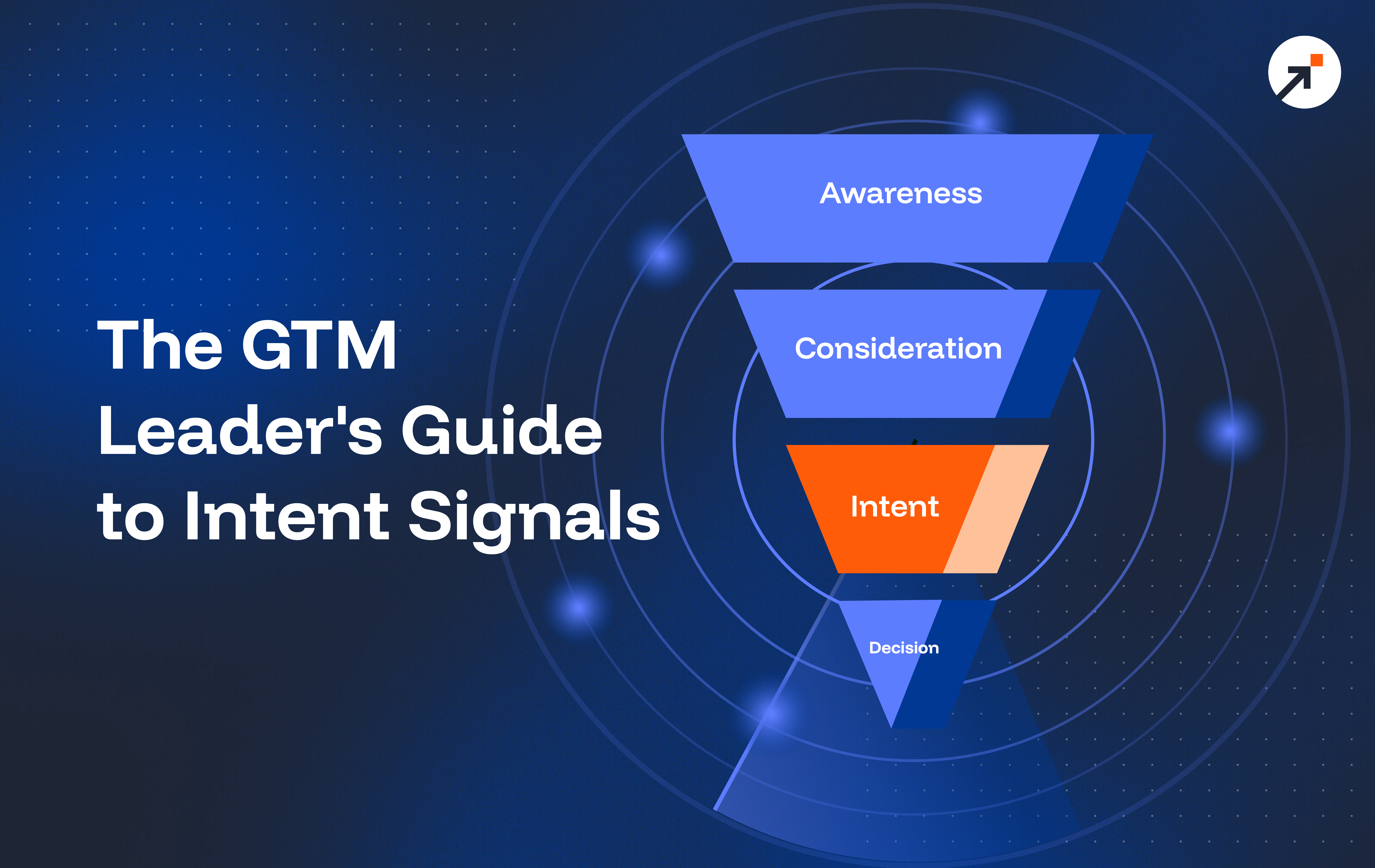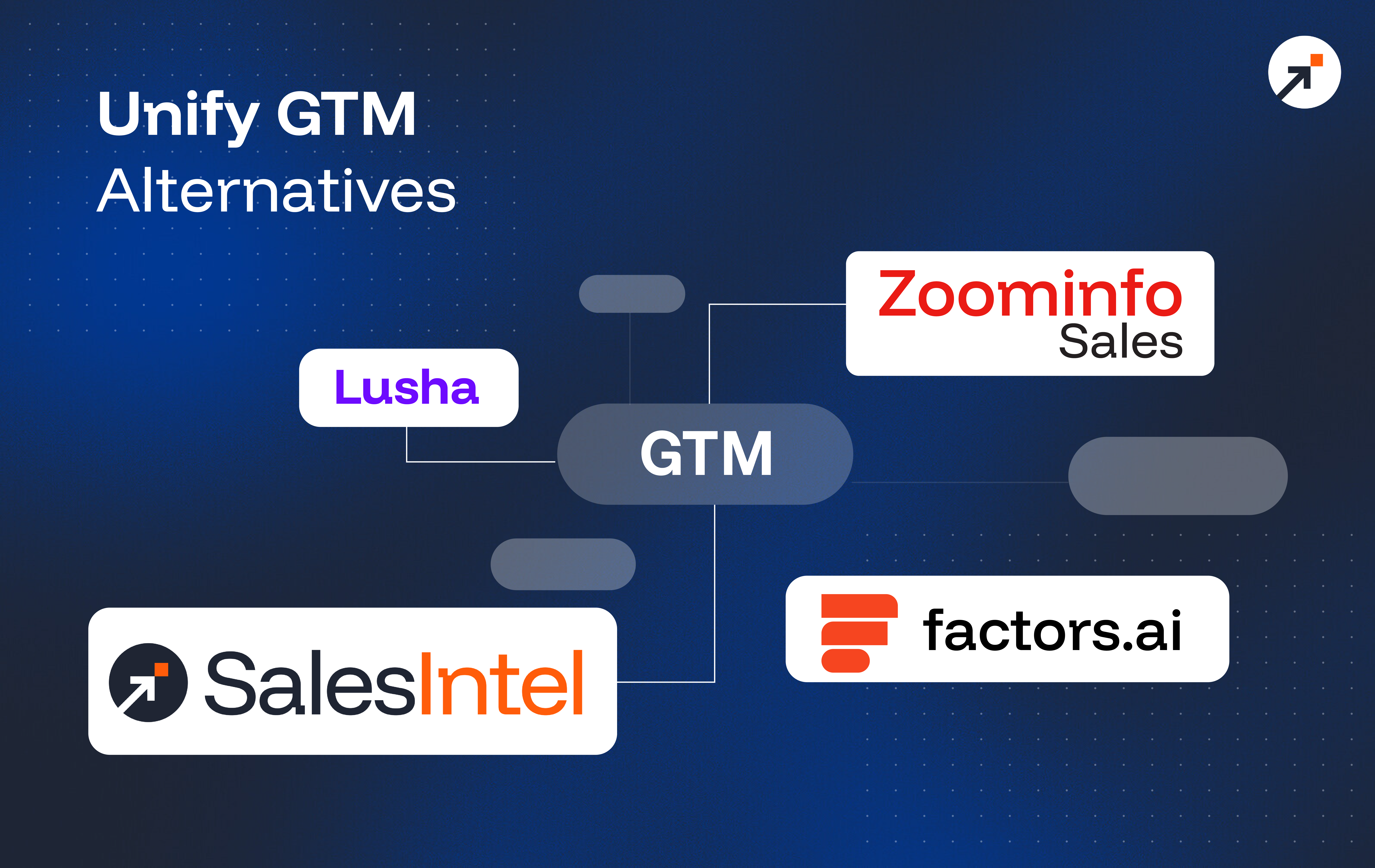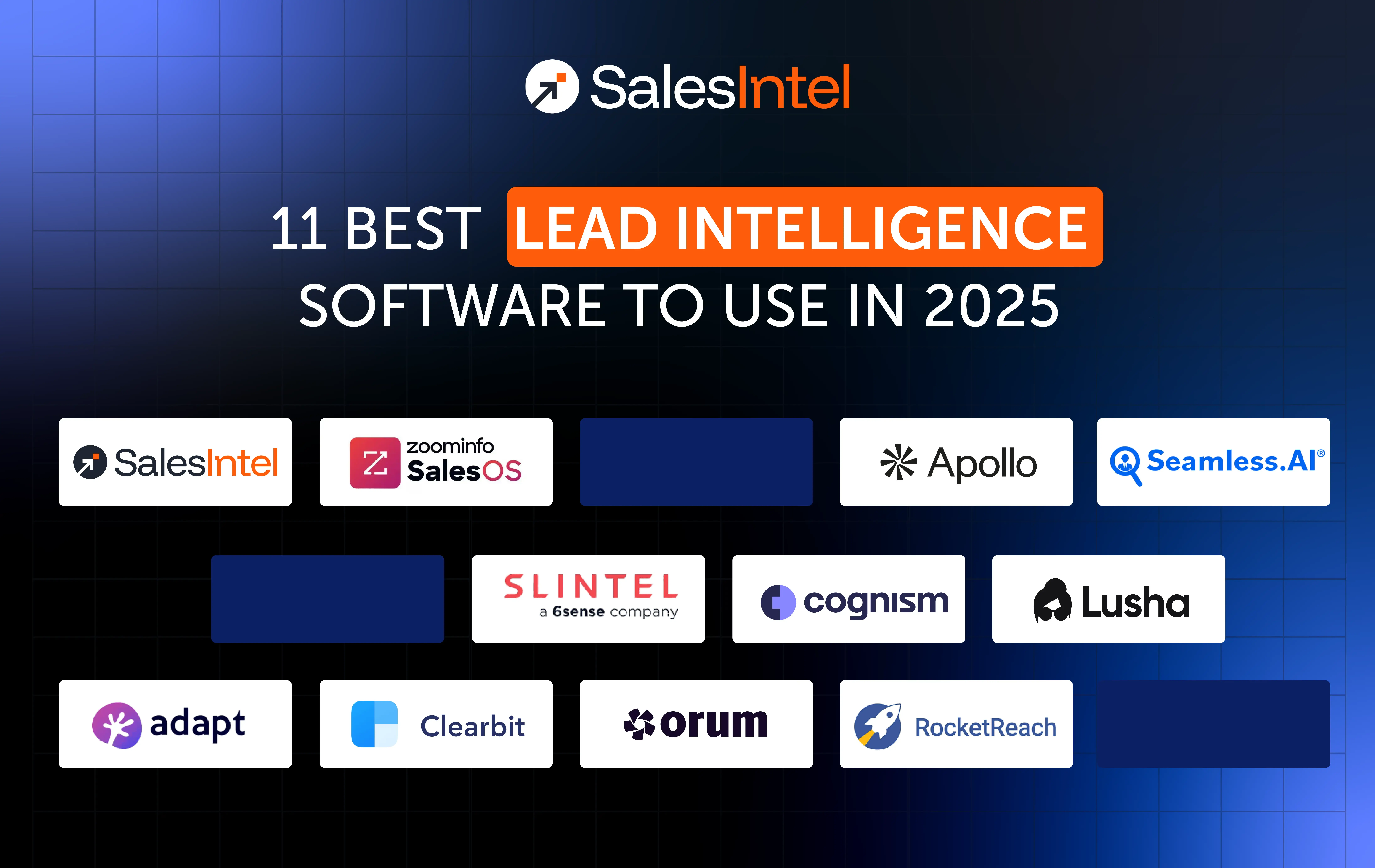In B2B sales, reaching the right accounts can make all the difference. When sales teams aim broadly without refining their target lists, they often face low conversion rates, wasted time, and missed revenue opportunities. Broad audience targeting might initially seem like a practical approach to maximize reach, but in reality, it often leads to shallow connections and sales that struggle to close. Without a clear focus on accounts that are highly relevant and interested, sales teams risk expending effort on leads that may never convert.
Refining target lists—pinpointing accounts that match ideal customer profiles and exhibit high purchase intent—has become a cornerstone of modern B2B sales strategy. With today’s data-driven tools, it’s possible to gain precise insights into potential buyers, helping sales teams prioritize accounts where engagement will likely yield the highest returns. This precision targeting allows for more meaningful conversations, shorter sales cycles, and ultimately, better sales outcomes. In today’s competitive market, a targeted approach isn’t just beneficial; it’s essential for staying ahead.
In this blog, we’ll discuss:
- The Pain Point
The common challenges sales teams face in refining audience lists and identifying prospects with a high likelihood of conversion.
- SalesIntel’s Solution
How SalesIntel’s advanced filtering capabilities allow you to create hyper-targeted lists based on firmographic, technographic, and intent data, so you can focus efforts on accounts that are ready to engage.
- Benefits of Targeted List Building
How refining your approach translates to increased conversion rates, more efficient resource allocation, and improved personalization in outreach.
- Getting Started
Practical steps for using SalesIntel’s platform to build these hyper-targeted lists.
By the end of this article, you’ll have a clear roadmap for improving your list-building process and maximizing your outreach impact, setting the stage for a more successful sales strategy.
Challenges in Refining Target Audience Lists
In B2B sales, crafting a precise target audience list can be a complex and ongoing challenge. Sales and marketing teams often face several key obstacles when attempting to narrow down prospects effectively, each of which can impact the quality and outcomes of their outreach. Here are the most common struggles they encounter:
- Difficulty in Narrowing Down Prospects with Specific Purchase Intent
Identifying which accounts are truly interested in purchasing or in the early stages of considering a solution is critical but challenging. Traditional approaches often rely on demographic data alone, leaving little insight into a prospect’s actual buying interest. Without visibility into purchase intent signals—such as recent online research activity or content engagement relevant to their solution—teams may waste time and resources on accounts that lack an immediate or genuine interest in buying. This lack of focus can lead to high outreach volumes but lower conversion rates, as conversations are less relevant and less likely to progress.
- Limited Visibility into Account-Specific Details
Creating a refined target list requires a deep understanding of each account, including firmographic data like company size, industry, revenue, and location, as well as technographic details such as the software and technology stacks in use. Without access to this information, sales teams are left to guess whether a prospect has the potential to benefit from their offering. This blind approach means that valuable leads with strong alignment might be overlooked, while other prospects that lack a true fit end up on the list, ultimately diluting the effectiveness of sales outreach efforts.
- Overwhelming, Unqualified Leads That Don’t Align with the Team’s Focus
Many sales teams find themselves inundated with large volumes of unqualified leads that don’t align with their specific focus or product fit. Broad, unspecific lists can introduce countless leads that lack the necessary criteria to become viable opportunities, stretching sales resources thin. When a significant portion of the pipeline consists of these unqualified leads, teams struggle to focus on high-quality prospects, and sales velocity suffers as a result. Instead of progressing through the pipeline efficiently, reps find themselves bogged down in unproductive interactions, leading to frustration, burnout, and ultimately, missed revenue.
These challenges underscore the importance of having access to data-driven tools that enable precise segmentation and prospect qualification. By addressing these obstacles, sales and marketing teams can focus their efforts on high-potential accounts, improve conversion rates, and ultimately drive greater sales success.
Building Targeted Lists with Precision Using SalesIntel
SalesIntel equips sales and marketing teams with powerful filtering tools to create hyper-focused target lists, enabling them to reach the right accounts with greater accuracy. By combining firmographic, technographic, and intent data, SalesIntel provides users with detailed insights into their prospects, allowing them to prioritize high-fit, high-intent accounts that are more likely to convert. Here’s a closer look at each of SalesIntel’s advanced capabilities and how they streamline the list-building process.
1. Firmographic Filtering
SalesIntel’s firmographic filters allow users to define their target audience by specific company attributes that align with their Ideal Customer Profile (ICP). With these filters, users can narrow down prospects based on factors such as:
- Company Size
Target accounts by the number of employees, focusing on small businesses, mid-sized firms, or large enterprises based on which segment aligns best with your solution.
- Industry
Focus on industries where your solution has proven success, ensuring your outreach is directed toward companies that stand to benefit most.
- Location
Target companies in specific regions or countries, which is especially useful for territory-based sales strategies.
- Revenue
Identify companies with budgets that align with your price point, helping you focus on those with the financial capacity to invest in your offering.
With firmographic filtering, users can ensure that they’re engaging with companies that are naturally a good fit for their product or service, eliminating broad, unqualified prospects and increasing the likelihood of conversion.
2. Technographic Data
SalesIntel’s technographic data enables users to filter and prioritize accounts based on the technologies a company currently uses, providing deeper insights into how compatible a prospect might be with their solution. Technographic data proves especially valuable for companies that rely on compatibility or integration with certain software platforms. Key aspects include:
- Technology Stack
Identify accounts using specific tools, platforms, or software relevant to your solution. For instance, if your product integrates seamlessly with a certain CRM, targeting companies that use that CRM can lead to more successful implementations and quicker sales cycles.
- Technology Maturity
Recognize companies that align with your ideal level of technological sophistication, allowing you to tailor your outreach based on where they are in their digital journey.
With technographic insights, sales teams can focus on accounts that not only fit their ideal customer profile but also have existing tech stacks compatible with their solution, making the sales process more relevant and personalized.
3. Intent Data
SalesIntel’s intent data goes beyond traditional account filters by identifying accounts that are actively researching or showing interest in solutions like yours. This high-value data enables users to target warm leads—those accounts most likely to convert—by surfacing high-intent signals. Intent data functionality includes:
- Research Keywords
Identify the topics and keywords that potential customers are engaging with, indicating their interests and areas of need.
- Intent Scoring
Prioritize accounts based on intent scores, which measure the intensity of a prospect’s interest. Higher intent scores suggest a greater likelihood of purchase.
- Recency of Activity
Target accounts with recent intent signals, ensuring that outreach happens when prospects are most engaged and actively seeking solutions.
With intent data, SalesIntel empowers teams to zero in on accounts that are already in the buying journey, helping them direct efforts toward prospects more likely to convert, thus maximizing ROI on their outreach campaigns.
Benefits of Building Hyper-Targeted Lists
SalesIntel’s targeted list-building features provide significant advantages that directly impact sales outcomes, team efficiency, and customer engagement. Here are the top benefits:
- Increased Conversion Rates
By targeting only high-fit, high-intent accounts, teams are able to have more meaningful conversations with leads who are more likely to convert. This refined approach reduces wasted outreach and shortens the sales cycle by focusing on accounts that are primed for engagement.
- Efficient Use of Resources
Hyper-targeted lists allow sales teams to concentrate their efforts on accounts that align with their ICP and are showing strong intent signals. This strategic focus not only saves time and resources but also frees up bandwidth to engage in more personalized, value-driven conversations with top-priority accounts.
- Improved Personalization
With a deeper understanding of each account’s firmographic, technographic, and intent data, sales teams can tailor their messaging to reflect the specific needs, challenges, and interests of their prospects. This heightened personalization increases engagement, builds trust, and ultimately fosters stronger client relationships.
By leveraging SalesIntel’s advanced filtering capabilities, sales and marketing teams can build hyper-targeted lists that drive higher engagement, improved conversions, and optimized resource allocation, creating a more efficient and impactful sales process.
How to Use SalesIntel for Effective List Building
SalesIntel’s advanced filtering capabilities make it easy to craft precise, hyper-targeted lists that align with your sales goals. By using firmographic, technographic, and intent data filters, sales teams can create a refined list of prospects with the highest potential for conversion. Here’s a step-by-step guide to building these targeted lists in SalesIntel:
Step 1: Define Firmographic Filters Based on Your Ideal Customer Profile (ICP)
The first step in creating an effective list is setting firmographic filters to narrow down the audience to companies that closely match your Ideal Customer Profile (ICP). Firmographics offer foundational information about potential accounts, helping sales teams ensure they’re targeting companies most likely to benefit from their solutions. To apply firmographic filters effectively:
- Industry
Start by selecting industries that are aligned with your product’s use cases. This ensures that the companies you target operate in sectors where your solution provides the most value.
- Company Size
Determine whether your ideal customers are small businesses, mid-sized firms, or large enterprises, as your approach might differ based on company size. Set filters for employee count or revenue to focus on companies that match your ICP in terms of scale.
- Location
For territory-based sales teams, filtering by geographic region can be crucial. Define the specific regions, countries, or cities where your target accounts are based, allowing for targeted, region-specific outreach.
- Revenue Range
For solutions that cater to specific budget ranges, setting revenue filters can help target companies with the financial capacity to invest in your offering.
With firmographic filters, you’ve already created a baseline list of accounts that fit the profile of a high-potential customer, setting the stage for deeper filtering with technographic data.
Step 2: Add Technographic Layers to Prioritize Accounts with Compatible or Complementary Technologies
Technographic data provides insights into the technology stack of potential accounts, revealing the tools, software, and platforms these companies are currently using. This information is crucial for identifying companies that are not only a good fit but also are technologically aligned with your offering. Here’s how to leverage technographic filters in SalesIntel:
- Identify Key Technologies
List any tools, platforms, or software that align with or complement your solution. For example, if your product integrates with specific CRM systems, filtering for companies that use those CRMs helps narrow down accounts with a high likelihood of integration success.
- Exclude Incompatible Technologies
For companies that might face challenges integrating with certain technologies, exclude those tech stacks to avoid potential compatibility issues.
- Evaluate Technology Maturity
Understanding a company’s technological maturity level—whether they’re advanced users of specific platforms or new adopters—can help you tailor your messaging and approach accordingly.
Technographic filtering allows you to focus on accounts that are either already aligned with your technology ecosystem or primed to adopt it. This targeted approach not only increases compatibility but also strengthens the relevance of your outreach, increasing the likelihood of productive conversations.
Step 3: Apply Intent Data Filters to Hone In on High-Priority Prospects Showing Relevant Interest Signals
Intent data takes targeting to the next level by identifying accounts that are actively researching or showing interest in products or services similar to yours. SalesIntel’s intent data provides real-time insights into which companies are “in-market” for your solution, helping sales teams prioritize high-intent accounts. Here’s how to use intent data filters:
- Identify Key Topics or Keywords
Start by selecting intent signals relevant to your product. SalesIntel’s intent data platform tracks topics related to your industry, allowing you to identify prospects researching keywords tied to your offering.
- Filter by Intent Score
Intent data is often scored based on the intensity of interest shown by each account. Prioritize companies with high intent scores, as they’re more likely to be in the buying stage and open to outreach.
- Segment by Recency
The timing of intent signals can be crucial. Focus on accounts with recent activity related to your industry to ensure outreach aligns with their current needs and interest level.
By applying intent data filters, you’re narrowing down the list to accounts that not only fit your ICP and technology profile but also are actively seeking a solution. These accounts represent your best opportunities, allowing for more personalized, high-impact engagement.
Putting It All Together: Your Targeted List
Once you’ve applied firmographic, technographic, and intent data filters, you’ll have a hyper-targeted list of accounts that closely align with your ideal customer profile, use relevant technologies, and show clear buying intent. This three-layered approach ensures your outreach efforts focus on the highest-potential prospects, making every conversation more likely to drive conversion.
By following these steps in SalesIntel, sales teams can build smarter, leaner target lists that maximize efficiency and enhance conversion rates.
From Outreach to Outcomes: The Power of Hyper-Targeted Lists
Targeting the right accounts can be the difference between closing a deal and losing momentum. Broad, unfocused outreach often results in low conversion rates, strained resources, and missed revenue opportunities. By honing in on high-fit, high-intent accounts, sales teams can maximize their efforts where they’re most likely to yield returns. SalesIntel’s advanced filtering tools empower users to create hyper-targeted lists by combining firmographic, technographic, and intent data, giving them the precision needed to identify accounts that are ready to engage. This allows teams to bypass unqualified leads, ensuring that every outreach effort counts.
SalesIntel’s capabilities not only help sales teams close more deals but also enable them to build stronger, more meaningful client relationships by delivering relevant, personalized interactions. With deep insights into each account’s needs, interests, and technology stack, teams can tailor their messaging and approach, increasing engagement and establishing trust. Leveraging SalesIntel’s tools, sales and marketing teams can position themselves for long-term success by focusing on the accounts that drive real growth, allowing for a more efficient, productive, and effective sales process.
Don’t just take our words. Schedule a demo tailored to your ideal customer profile.




